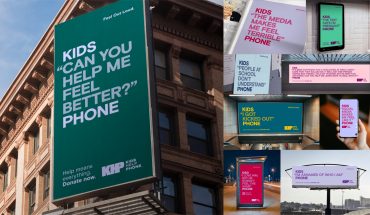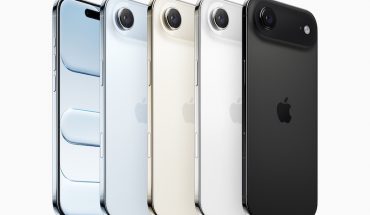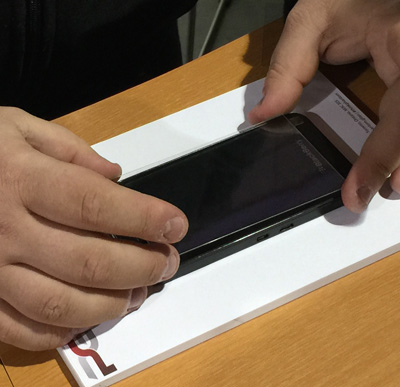 The annual Canadian Wireless Trade Show that took place in Toronto Oct. 29-30 catered as much to retailers and business users as it did consumers, and glass screen protector manufacturers were among those hawking their wares.
The annual Canadian Wireless Trade Show that took place in Toronto Oct. 29-30 catered as much to retailers and business users as it did consumers, and glass screen protector manufacturers were among those hawking their wares.
While the lion’s share of screen protector sales continue to be of the flimsier plastic variety, there is a burgeoning trend in tougher models made of real glass. The durability of glass could mean the difference between an expensive phone replacement and simply paying a fraction of the cost to replace the protector after a nasty fall. Assuming the damage isn’t that bad, the battered protector could live on and save the day again when needed.
Considering the cost of the phones they’re protecting, it’s not surprising to see that glass is becoming more of a mainstream alternative. A few manufacturers were on hand at the Wireless Show, showing their latest designs, with other exhibiting retailers presenting other competing models that have either entered the market in Canada, or are about to.
Toronto-based PhantomGlass has only been on the market for a matter of months in Canadian retail, yet it offers one of the widest ranges of protectors, including models for tablets and some phones that came to market in 2013. Fully transparent and made of Corning Gorilla Glass, the tempered glass protector is designed for easy alignment and application that avoids bubbles, liquids and blemishes. A layer of silicone within the glass can fill and “heal” minor scratches, a technology not unlike the way car windshields are repaired.
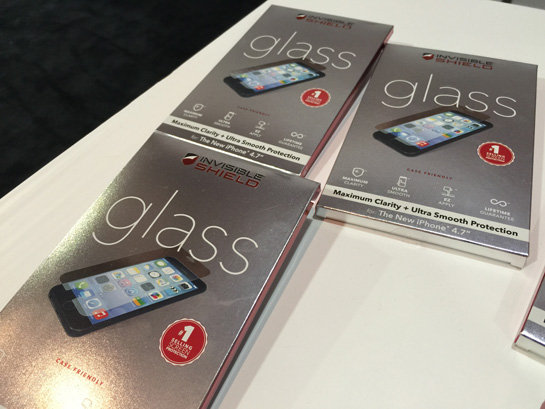
Its more seasoned and established competitor, Zagg, entered the glass protector market with its first designs early in 2014, playing catch-up with some other brands. The InvisibleShield Glass line focuses mainly on the most popular devices, with the two new Apple iPhones, two new iPads and Samsung Galaxy Note 4 chief among them. It’s expected there will be one for the upcoming Google Nexus 6 as well. Zagg also uses tempered glass to make its product, with a special coating that can withstand scratches and reduce smudges and fingerprints. Transparent, super thin at 0.4mm and with a generous warranty, the InvisibleShield Glass lineup will be a major player in this particular sub-category of screen protection.
Noted accessories manufacturer, Moshi, was also on hand, and presented its iVisor glass screen protector. Unlike others, this one is made of IonGlass, which the company says is a special type of glass that is chemically-strengthened to increase its durability without adding weight or thickness. It considers it even harder than tempered steel.
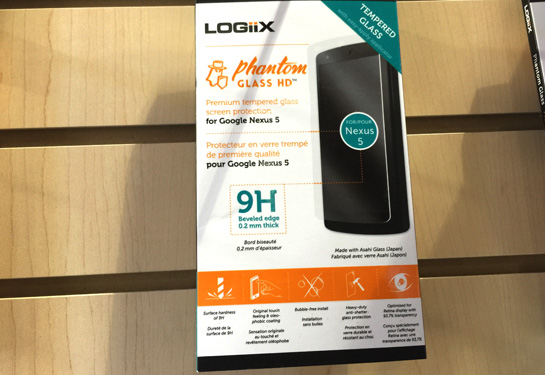
Though there is no affiliation, another tempered glass protector called Phantom Glass HD from Logiix was at the show at a distributor’s booth. With different packaging, and slightly different cuts for each phone that aren’t quite as extensive as the others, it already has a retail presence at London Drugs and other smaller retailers.
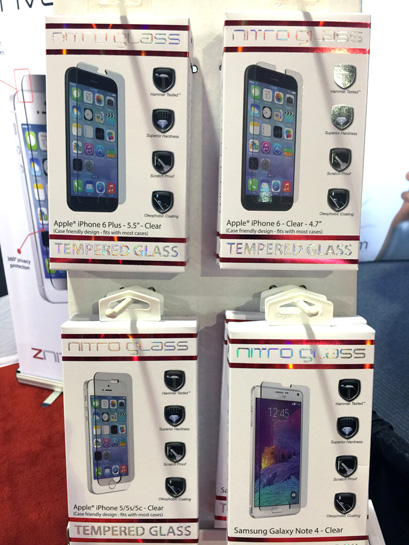
Another upstart in this space is Nitro Glass, also making a tempered glass protector that offers very similar features and easy application, but includes a “Privacy” model that fades to black when viewed from an angle, ensuring users are safer from prying eyes.
There were a couple of others that have yet to hit the Canadian market, but the increased presence of these types of protectors over previous years signals that manufacturers are taking it seriously. Up to now, they have had to painstakingly find ways to make protectors that can accommodate a wide variety of cases, which they can’t guarantee. Now that they are designing them to cover the entire front panel (with cutouts in the appropriate places, of course) with contoured edges to better mesh with cases, it’s a wonder if the shoe will be on the other foot soon. Case manufacturers may have to accommodate the glass if consumers start taking to them in droves sooner than later.
Cost is a consideration that will play a role. The average glass screen protector is at least $30, though most are north of $40 for smartphones — $50 and higher for tablets. Unlike the malleable plastic protectors that offer much better margins on sales, the glass ones are reportedly much thinner for manufacturers, thus justifying the higher prices.
Warranties are pretty good, all things considered. Usually, a protector will be replaced free of charge if it is damaged within a year of purchase (so keep that receipt).
We’ll be playing around with these protectors from here on in and you can look for more coverage on them in the coming weeks.


